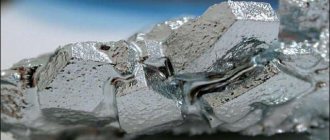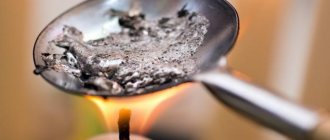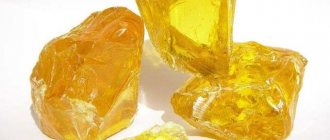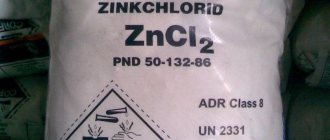Platinum
- mineral, natural Pt from the platinum group of the class of native elements, usually contains Pd, Ir, Fe, Ni. Pure platinum is very rare; most samples are represented by the ferrous variety (polyxene), and often by intermetallic compounds: isoferroplatinum (Pt,Fe)3Fe and tetraferroplatinum (Pt,Fe)Fe. Platinum, represented by polyxene, is the most common mineral of the platinum subgroup in the earth's crust.
- Structure
- Properties
- Reserves and production
- Origin
- Application
- Classification
- Physical properties
- Optical properties
- Crystallographic properties
See also:
Ice
— structure and physical properties
PROPERTIES
The color of polyxene ranges from silver-white to steel-black. The dash is metallic steel gray. The shine is typical metallic. The reflectivity in polished sections is high - 65-70. Hardness is 4-4.5, for varieties rich in iridium - up to 6-7. It has malleability. The fracture is hooked. Cleavage is usually absent. Ud. weight 15-19. A connection between the reduced specific gravity and the presence of voids occupied by natural gases, as well as inclusions of foreign minerals, has been noted. It is magnetic and paramagnetic. Conducts electricity well. Platinum is one of the most inert metals. It is insoluble in acids and alkalis, with the exception of aqua regia. Platinum also reacts directly with bromine, dissolving in it.
When heated, platinum becomes more reactive. It reacts with peroxides, and upon contact with atmospheric oxygen, with alkalis. A thin platinum wire burns in fluorine, releasing a large amount of heat. Reactions with other non-metals (chlorine, sulfur, phosphorus) occur less actively. When heated more strongly, platinum reacts with carbon and silicon, forming solid solutions, similar to the iron group metals.
Is it possible to melt platinum at home?
I wonder if it is possible to melt platinum at home - I’ll immediately make a reservation that you should start such actions if you understand the topic! Self-smelting methods are artisanal and sometimes unsafe.
It is almost impossible to obtain a pure product without impurities under such conditions; all melting methods are not ideal. It is better to seek help from a specialist.
Necessary equipment and materials
Some amateurs melt platinum using self-assembled gas burners using oxygen cylinders, while others do it with a welding machine. A porcelain crucible (heating pot) is also required.
Batch preparation
In general, the preparation process is no different from the industrial one, of course, within the limits of your capabilities, which are extremely limited at home.
Melting process
The alloy is placed in a crucible and heated with a gas torch, welding inverter or other homemade devices until the required temperature is reached.
Receiving castings
Cast metal comes in different forms depending on the mold created. Your preferences come into play here. The main thing is to let the platinum cool and use precautionary tools.
RESERVES AND PRODUCTION
Platinum is one of the rarest metals: its average content in the earth's crust (clarke) is 5·10−7% by mass. Even the so-called native platinum is an alloy containing from 75 to 92 percent platinum, up to 20 percent iron, as well as iridium, palladium, rhodium, osmium, and less often copper and nickel.
The world's proven reserves of platinum group metals amount to about 80,000 tons and are distributed mainly between South Africa (87.5%), Russia (8.3%) and the USA (2.5%).
In Russia, the main deposits of platinum group metals are: Oktyabrskoye, Talnakhskoye and Norilsk-1 sulfide-copper-nickel in the Krasnoyarsk Territory in the Norilsk region (more than 99% of explored and more than 94% of estimated Russian reserves), Fedorova Tundra (Bolshoi Ikhtegipakhk site) sulfide- copper-nickel in the Murmansk region, as well as alluvial deposits Konder in the Khabarovsk Territory, Levtyrinyvayam in the Kamchatka Territory, the Lobva and Vyisko-Isovskoye rivers in the Sverdlovsk Region. The largest platinum nugget found in Russia is the “Ural Giant” weighing 7860.5g, discovered in 1904. at the Isovsky mine.
Native platinum is mined at mines; alluvial platinum deposits are less rich, which are explored mainly by the method of spot sampling.
The production of platinum in powder form began in 1805 by the English scientist W. H. Wollaston from South American ore. Today, platinum is obtained from a concentrate of platinum metals. The concentrate is dissolved in aqua regia, after which ethanol and sugar syrup are added to remove excess HNO3. In this case, iridium and palladium are reduced to Ir3+ and Pd2+. The subsequent addition of ammonium chloride produces ammonium hexachloroplatinate(IV) (NH4)2PtCl6. The dried sediment is calcined at 800-1000 °C. The spongy platinum thus obtained is subjected to further purification by repeated dissolution in aqua regia, precipitation of (NH4)2PtCl6 and calcination of the residue. The purified sponge platinum is then melted into ingots. When reducing solutions of platinum salts by chemical or electrochemical methods, finely dispersed platinum is obtained - platinum black.
How platinum raw materials are processed
The metal is mechanically cleaned of foreign substances. Then comes the stage of chemical cleaning, which is aimed at improving quality and increasing the properties of the metal by chemically removing impurities.
At this stage of cleaning, the nuggets are heated in large porcelain containers, into which aqua regia is added. This process separates base metals that dissolve. But an insoluble precipitate containing other elements is also released.
The sediments are filtered and then re-treated with aqua regia. The osmium and iridium obtained during this process are further used in industry and are therefore extracted from the boilers.
As a result of these actions, platinum remains in two complexes:
An element called HCl is introduced into the second complex. It is he who transfers (NO) 2[PtCl6] to the first complex. This results in a single complex, which includes palladium, osmium and iridium, which are classified as noble metals. They must be converted into compounds (Ir3+, Pd2+), which cannot be affected by ammonium chloride, so that the elements do not precipitate. Next, the solution is changed by heating with sulfuric and oxalic acids.
After ammonium chlorine is introduced, platinum precipitates in the form of gold-colored granules. The platinum remains in solution. The extracted metal is then cleaned with ammonia and dried.
Only after such a long purification process is platinum ready for smelting.
At what temperature does it melt?
The melting point of platinum is considered to be 1773.5 °C, however, there are recommendations for melting certain types:
| Alloys | Melting temperature | Plastic | Specific gravity | Strength |
| Pt850/Ir | 1800—1820 °C | 15% | 21,5 | 160 HV |
| Pt900/Ir | 1780—1800 °C | 20% | 21,5 | 110 HV |
| Pt950/Ir | 1780—1790 °C | 30% | 21,45 | 80 HV |
| Pt 900/ Co30/ Pd70 | 1730°C – 1740°C | 22% | 20,4 | 120 HV |
| Pt850/Pd | 1730—1750 °C | 76 HV | ||
| Pt900/ Pd | 1740—1755 °C | 22% | 19,8 | 72 HV |
| Pt950/Pd | 1755—1765 °C | 22% | 19,8 | 68 HV |
| Pt950/Co | 1780—1765 °C | 20% | 20,8 | 135 HV |
| Pt960/Cu | 1725—1745 °C | 29% | 20,0 | 108 HV |
| Pt950/ Co/ Cu | 1750—1760 °C | 22% | 20,1 | 120 HV |
| Pt950/ 15In/ 30Ga | 1550—1625 °C | 26% | 20,22 | 200 HV |
| Pt950/ Ru | 1780—1795 °C | 34% | 20,7 |
ORIGIN
Platinum group minerals are mostly found in typical igneous deposits, genetically related to ultramafic igneous rocks. These minerals are among the last to be released in ore bodies (after silicates and oxides) at moments corresponding to the hydrothermal stage of the magmatic process. Platinum minerals poor in palladium (polyxene, platinum iridium, etc.) are found in deposits among dunites - olivine feldspar-free rocks rich in magnesia and poor in silica. Moreover, paragenetically they are extremely closely related to chrome spinels. Nickel-palladized platinum is predominantly distributed in basic igneous rocks (norites, gabbro-norites) and is usually associated with sulfides: pyrrhotite, chalcopyrite and pentlandite. Under exogenous conditions, in the process of destruction of bedrock deposits and rocks, platinum placers are formed. Most minerals of the platinum subgroup are chemically stable under these conditions. Platinum in placers occurs in the form of nuggets, flakes, plates, cakes, concretions, as well as skeletal forms and spongy secretions ranging in size from 0.05 to 5 mm, sometimes up to 12 mm. Flattened and lamellar platinum grains indicate significant removal from bedrock sources and redeposition. The range of platinum transfer in placers usually does not exceed 8 km; in spit placers it is greater. Palladite and cuprous varieties of platinum in the hypergenesis zone can be “ennobled”, losing Pd, Cu, and Ni. Cu and Ni content, according to A.G. Betekhtin, in platinum from placers can be reduced by more than 2 times compared to platinum from an indigenous source. In placers in many areas of the world, newly formed chemically pure platinum and palladium platinum in the form of sintered forms of a radial-radiant structure have been described.
Platinum. Stories and legends
Humanity has been familiar with platinum for more than two centuries. It was first noticed by members of the expedition of the French Academy of Sciences sent by the king to Peru. Don Antonio de Ulloa, a Spanish mathematician, was the first to mention it while on this expedition in his travel notes published in Madrid in 1748: “This metal has remained completely unknown since the beginning of the world until now, which is without a doubt very surprising.”
Platinum appears under the names “White Gold” and “Rotten Gold” in the literature of the 18th century. This metal has been known for a long time; its white, heavy grains were sometimes found during gold mining. It was assumed that it was not a special metal, but a mixture of two known metals. But they could not be processed in any way, and therefore platinum was not used for a long time. Until the 18th century, this most valuable metal, along with waste rock, was thrown into dumps. In the Urals and Siberia, grains of native platinum were used as shot for shooting. And in Europe, dishonest jewelers and counterfeiters were the first to use platinum.
In the second half of the 18th century, platinum was valued at half that of silver. It alloys well with gold and silver. Taking advantage of this, platinum began to be mixed with gold and silver, first in jewelry, and then in coins. Having learned about this, the Spanish government declared war on platinum “damage”. The Kopolevsky decree was issued, which ordered the destruction of all platinum mined along with gold. In accordance with this decree, officials of the mints in Santa Fe and Papayan (Spanish colonies in South America) solemnly, in front of numerous witnesses, periodically drowned the accumulated platinum in the Bogota and Cauca rivers. Only in 1778 this law was repealed, and the Spanish government itself began to mix platinum into gold coins. It is believed that the Englishman R. Watson was the first to obtain pure platinum in 1750. In 1752, after research by G. T. Schaeffer, it was recognized as a new metal. In the 70s of the 18th century, the first technical products from platinum (plates, wire, crucibles) were made.
APPLICATION
Platinum compounds (mainly amminoplatinates) are used as cytostatics in the treatment of various forms of cancer. Cisplatin (cis-dichlorodiammineplatinum(II)) was the first to be introduced into clinical practice; however, more effective diammineplatinum carboxylate complexes, carboplatin and oxaliplatin, are currently used.
Platinum and its alloys are widely used in jewelry production.
The world's first platinum coins were issued and circulated in the Russian Empire from 1828 to 1845. Minting began with three-ruble coins. In 1829, “platinum duplons” (six-ruble coins) were established, and in 1830, “quadruples” (twelve-ruble coins). The following coin denominations were minted: 3, 6 and 12 rubles. 1,371,691 pieces of three-ruble coins were minted, 14,847 pieces of six-ruble coins were minted. and twelve-ruble coins - 3474 pcs.
Platinum was used in the manufacture of insignia for outstanding services: the image of V.I. Lenin on the Soviet Order of Lenin was made from platinum; The Soviet Order of Victory, the Order of Suvorov, 1st degree, and the Order of Ushakov, 1st degree, were made from it.
- Since the first quarter of the 19th century, it was used in Russia as an alloying additive for the production of high-strength steels.
- Platinum is used as a catalyst (most often in an alloy with rhodium, and also in the form of platinum black - a fine powder of platinum obtained by reducing its compounds).
- Vessels and stirrers used in the melting of optical glasses are made from platinum.
- For the manufacture of laboratory glassware (crucibles, spoons, etc.) resistant to chemicals and high heat.
- For the manufacture of permanent magnets with high coercive force and residual magnetization (an alloy of three parts of platinum and one part of cobalt PlK-78).
- Special mirrors for laser technology.
- For the manufacture of durable and stable electrical contacts in the form of alloys with iridium, for example, contacts of electromagnetic relays (alloys PLI-10, PLI-20, PLI-30).
- Galvanic coatings.
- Distillation retorts for the production of hydrofluoric acid, production of perchloric acid.
- Electrodes for the production of perchlorates, perborates, percarbonates, peroxodisulfuric acid (in fact, the use of platinum determines the entire world production of hydrogen peroxide: electrolysis of sulfuric acid - peroxodisulfuric acid - hydrolysis - distillation of hydrogen peroxide).
- Insoluble anodes in electroplating.
- Heating elements of resistance furnaces.
- Manufacturing of resistance thermometers.
- Coatings for microwave technology elements (waveguides, attenuators, resonator elements).
Platinum - Pt
| Molecular weight | 195.08 g/mol |
| origin of name | from Spanish Platina, will reduce. from plata - “silver”, i.e. silver, little silver |
| IMA status | valid, first described before 1959 (before IMA) |
Melting platinum at home
If a situation arises when you need to melt platinum at home, you first need to familiarize yourself with this process. Before the procedure, prepare the necessary tools and materials. Platinum can be melted using homemade gas burners using oxygen cylinders. A welding machine is also used for these purposes. A porcelain crucible is used as a container.
Laboratory porcelain crucible
The mixture is prepared in the same way as in industrial conditions. The melting process itself is performed as follows.
- The platinum alloy is placed in a crucible and heated with a gas burner or other homemade devices until the required temperature is reached.
- The type of metal cast depends on the mold created and personal preference.
- After melting, the platinum must cool completely.
- The finished product is removed from the mold using tools and taking the necessary precautions.
As you can see, you can melt platinum yourself, although the final result largely depends on the skills of the master, the quality of materials and knowledge of technology. It is almost impossible to obtain a pure product without impurities without special equipment, because... All melting methods are not ideal. If you need pure metal, it is better to contact specialists.
PHYSICAL PROPERTIES
| Mineral color | steel gray fading to dark gray |
| Stroke color | gray-white |
| Transparency | opaque |
| Shine | metal |
| Cleavage | No |
| Hardness (Mohs scale) | 4-4,5 |
| Strength | malleable |
| Kink | serrated, hooked |
| Density (measured) | 14 - 19 g/cm3 |
| Radioactivity (GRapi) | 0 |
| Magnetism | paramagnetic |











